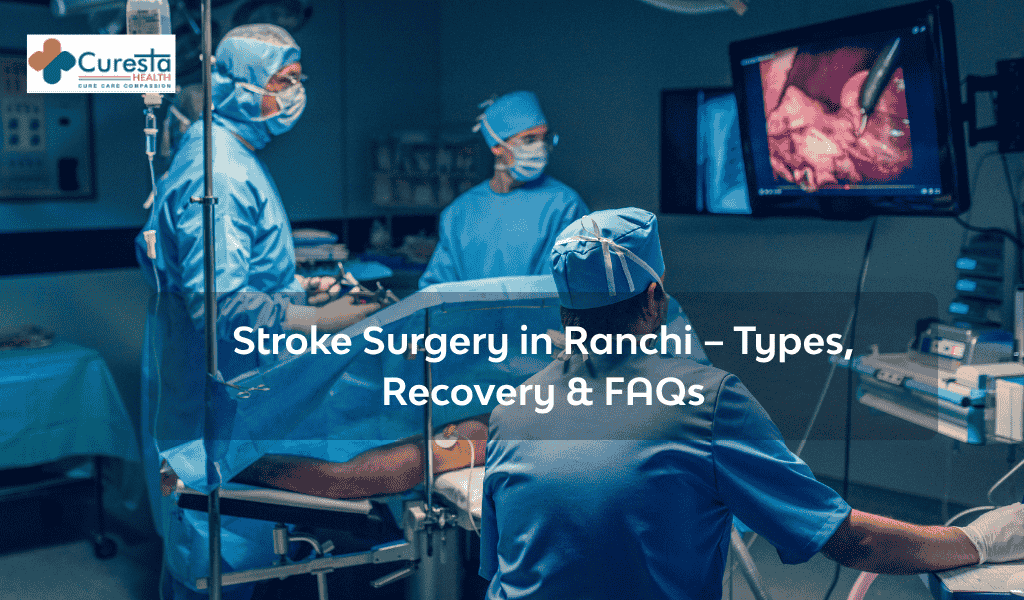



A stroke is one of the leading causes of disability worldwide, often leading to long-term health complications. Timely and appropriate treatment is critical to reducing its impact and improving outcomes. While medication and rehabilitation are common treatment options, surgical management plays a vital role in certain types of stroke cases. This blog aims to explore the different surgical options available for stroke treatment, how they help improve patient outcomes, and why timely intervention is crucial in preventing permanent brain damage.
A stroke is a condition in which the blood flow to a part of the brain is disrupted, which leads to brain cell damage. There are two main types of stroke:
Symptoms of a stroke may include sudden numbness or weakness (specifically on one side of the body), confusion, finding it hard to speak, and loss of balance. Immediate medical attention is essential because the longer the brain is deprived of oxygen and nutrients, the greater the risk of permanent brain damage.
Not all strokes require surgical intervention, but there are specific conditions where surgery is recommended:
Surgery can be performed as an emergency (immediately after a stroke) or as an elective procedure, depending on the type and severity of the stroke.
Thrombectomy is a procedure that is used to remove blood clots from the brain in ischemic stroke patients. The procedure involves inserting a catheter via an artery, often from the neck or groin, to access the clot and remove it mechanically. This surgery is most effective when performed within 6-24 hours of the stroke. Thrombectomy can significantly reduce the risk of long-term disability, as it restores blood flow and prevents further brain cell death.
Decompressive craniectomy is performed to remove a portion of the skull to relieve the pressure from brain swelling. This surgery is commonly performed in hemorrhagic stroke patients, where brain swelling can lead to further damage or death. By relieving the pressure, decompressive craniectomy helps to save brain tissue, but it often requires follow-up surgery to replace the skull bone once swelling subsides.
For patients with brain aneurysms, two main methods are used to prevent rupture:
Both methods are effective in preventing further bleeding or complications, and the choice between clipping and coiling depends on the size, location, and shape of the aneurysm.
As with any surgical procedure, stroke surgery comes with risks. Common complications include:
Before surgery, patients undergo thorough evaluation and risk assessment to determine if the benefits of surgery outweigh the risks.
After stroke surgery, patients are closely monitored in the ICU for several days. Recovery time varies depending on the type of procedure and the patient’s overall health. Some patients may start to experience improvements within a few weeks, but full recovery can take several months. Rehabilitation plays a key role in recovery. Physical therapy, occupational therapy, and speech therapy are crucial for regaining motor skills, strength, and speech. Patients are encouraged to incorporate a healthy lifestyle, including exercise and diet modifications, to reduce the risk of another stroke. Ongoing medical follow-ups are crucial for monitoring progress and adjusting treatment plans accordingly.
Advancements in stroke surgery continue to improve patient outcomes. Robotic surgery and improved clot-dissolving medications are revolutionising the way we treat strokes. Additionally, technologies like artificial intelligence and advanced imaging techniques are improving the accuracy of stroke diagnosis and helping doctors make better treatment decisions. There is also potential for personalised treatment plans based on genetic and molecular research, offering more effective solutions for stroke patients in the future.
Surgical intervention is a critical part of stroke treatment in certain cases, offering significant benefits for recovery. Timely intervention can minimise brain damage and improve long-term outcomes. If you or a loved one experiences symptoms of a stroke, seeking quick medical attention is crucial. Early treatment can make all the difference in recovery.
If you or someone you know is at risk for stroke or experiencing symptoms, book an appointment with our stroke specialists today. At Curesta Health, we offer the latest in stroke management and surgical treatment options to help you recover and reduce the risk of future strokes. With our expert team and advanced technology, you’re in the best hands for your health.